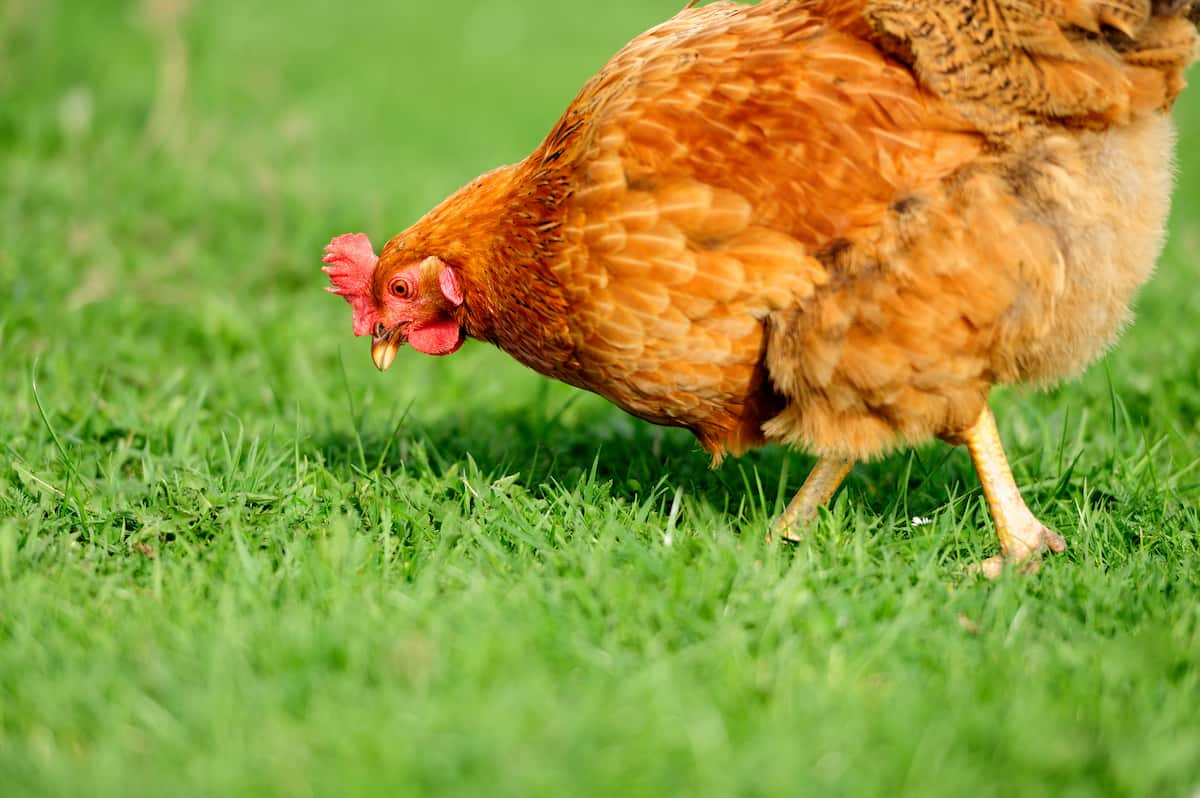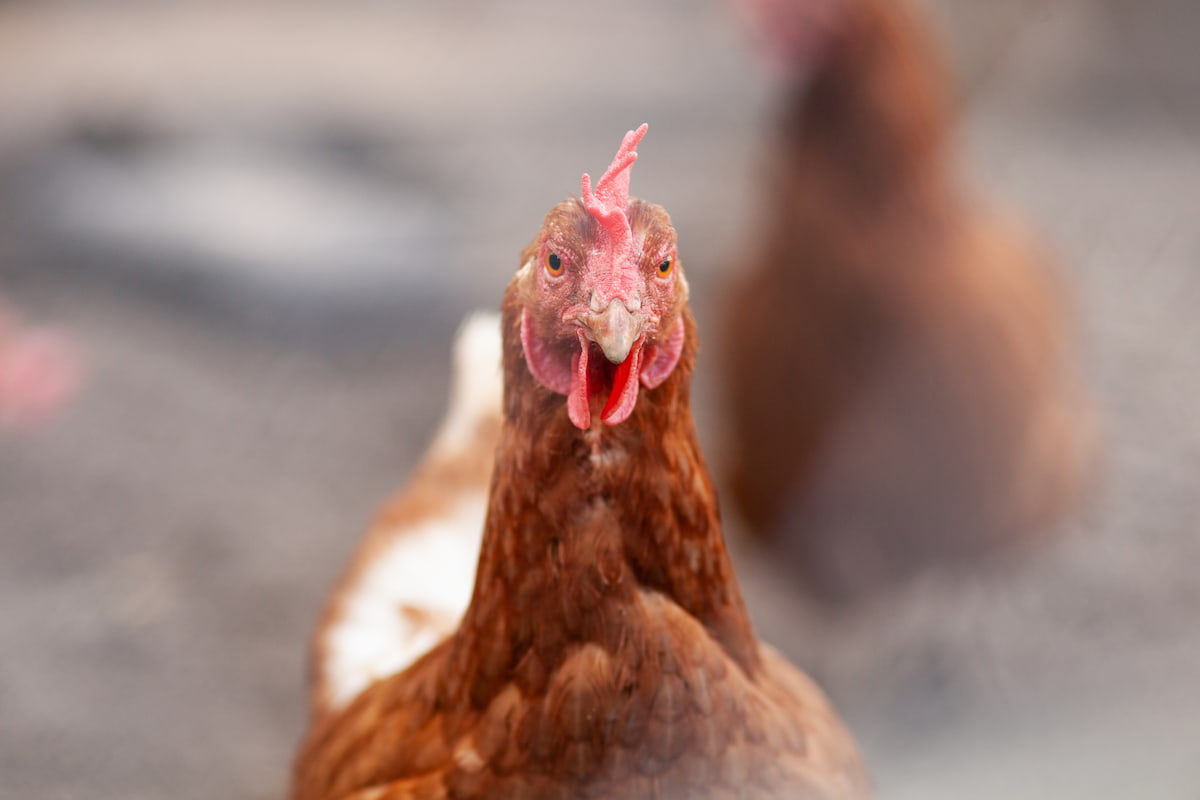The New Hampshire chicken, also called New Hampshire Red breed, originated in the New Hampshire state in the United States. It was bred as a dual-purpose breed suitable for producing meat and eggs. However, like other livestock animals, they require proper care and attention to thrive.

New Hampshire Red Chicken Breed
Personality and Temperament of New Hampshire Red Chickens
- New Hampshire Red Chickens are friendly and sociable, making them great family pets. They are known to be curious birds that enjoy exploring their surroundings. These chickens also have a calm temperament, which makes them easy to handle.
- New Hampshire Reds are not aggressive by nature. They are quite gentle and easily intimidated by more dominant breeds. If you plan on keeping New Hampshire Reds with other chicken breeds, it’s best to pair them up with similar-sized breeds.
- It can also make good mothers due to their nurturing nature. They often sit on eggs for long periods without leaving the nest unguarded and fiercely protect their baby chickens once they hatch.
- The personality and temperament of New Hampshire Red Chickens make them excellent additions to backyard flocks.
Characteristics of the New Hampshire Red Chicken
- The New Hampshire Red Chicken is a medium to large breed with a broad and muscular body. Their feathers are bright red with black-tipped tails and wings, while their beak, comb, and wattles are all a deep red.
- These chickens have strong legs that allow them to forage efficiently in fields and backyards. They are also known for being hardy birds that withstand cold winters and hot summers.
- The New Hampshire Reds have an excellent disposition, making them easy to handle, even by children. They are typically calm but remain alert at all times, which makes them good guardians of the flock against predators. This breed has historically been bred both for meat and egg production purposes. One distinctive characteristic of this breed is its ability to adapt quickly to different environments.
Care and Feeding of the New Hampshire Red Chicken
- Providing clean water is crucial for their health. Ensure they always have access to fresh water, as dehydration can be fatal.
- A well-balanced diet is necessary for optimal egg production and growth.
- Keeping their living space clean is important by regularly changing bedding or litter material in the coop.
- Provide ample space for exercise to maintain good physical health – this includes perches where they can roost at night.
- Keeping an eye out for any signs of illness or stress, such as lethargy or lack of appetite, is necessary. Seek veterinary immediately if you notice anything unusual about your chickens’ behavior or appearance.
Housing for New Hampshire Red Chickens
- The coop should be large enough to accommodate your birds comfortably. A good rule is to allow at least 4 square feet per bird.
- Ensure the coop is well-ventilated but draft-free so your birds can breathe easily without exposure to harsh winds. The coop should also have windows or vents that can be opened and closed as needed.
- New Hampshire Reds are active birds, so they also require plenty of space outside of their coop. A fenced-in run with fresh grass and dirt will keep them healthy and happy.
- When designing your chicken housing, make sure it’s easy for you to clean regularly. Chickens produce a lot of waste, quickly becoming a breeding ground for bacteria if not cleaned out regularly.
In case you missed it: Ultimate Guide to Serama Chicken Breed: Characteristics, Feed, and Care

New Hampshire Red Chicken Weight
- It is medium-large, with males weighing around 8.5 pounds and hens approximately 6.5 pounds. This makes them larger than other popular breeds, such as the Rhode Island Red and Leghorn.
- Their size makes them excellent for meat production, one of the primary reasons they were developed as a dual-purpose breed. Their plump bodies provide a good amount of meat per bird.
New Hampshire Red Egg Production
- The New Hampshire Red chicken breed is known for its excellent egg-laying capabilities. The hens can lay up to 200 large eggs annually, making them a reliable source of fresh and nutritious household eggs.
- The light brown tint of the eggs the New Hampshire Red hens laid gives them an appealing visual appearance. This unique color also sets them apart from other chicken breeds that typically produce white or brown-colored eggs.
Tips for Raising New Hampshire Red Chickens
- Ensure that your chickens have access to clean water and food. A good quality feed specifically formulated for chickens should be provided in appropriate quantities depending on the age of your birds. Fresh fruits and vegetables can also be given as occasional treats.
- Provide adequate shelter for your chickens. The coop should be dry, well-ventilated with plenty of natural light during the day but protected from predators at night. Bedding materials like straw or wood shavings must also be changed regularly.
- Watch for signs of illness like lethargy, loss of appetite, or abnormal fecal matter consistency/coloration; immediately consult a veterinarian experienced in avian medicine.
- Regular cleaning routines involving disinfection sprays will help prevent outbreaks that may compromise flock health, leading to economic losses; this should include washing hands before handling birds after every chore completion done around their living space.
Health Care Tips For New Hampshire Red Chickens
- One of the most important aspects of chicken health care is vaccination against common poultry diseases such as Marek’s disease, Newcastle disease, and Avian influenza.
- In addition to vaccinations, regular check-ups with a veterinarian can help identify any potential health issues early on. Keeping the coop clean and dry is crucial, providing fresh water and feed daily.
- Regularly checking your chickens for signs of parasites, such as feather loss or lethargy, will help you address any issues before they become more serious.
- Another important aspect of New Hampshire Red chicken care involves regular check-ups by a veterinarian familiar with poultry medicine. Be vigilant about any signs of illness, such as lethargy or abnormal behavior in your birds.
- By providing proper nutrition, good housing conditions, and attentive health care measures, you can ensure the longevity and productivity of your New Hampshire Red chickens while enjoying their friendly personalities daily.
In case you missed it: Ultimate Guide to Frizzle Chicken Breed: Characteristics, Feed, and Care

Conclusion
New Hampshire Reds are hardy birds with easy-going personalities, requiring proper care to thrive. Raising New Hampshire Red Chickens can be a rewarding experience for poultry enthusiasts. This American-bred bird boasts attractive reddish-brown feathers, a friendly personality, and hardy health.
- Feed Your Flock for Less: Top 10 Tips to Save on Chicken Feed
- Ultimate Guide to Ossabaw Island Hog: Breeding, Raising, Diet, and Care
- Hatching Answers: The Top 10 Reasons Your Chickens Aren’t Laying Eggs
- Eggs and Economics: Breaking Down the Cost of Raising Backyard Chickens
- Defend Your Greens: Proven Methods to Keep Iguanas Out of Your Garden
- Ultimate Guide to Cinnamon Queen Chicken: A Comprehensive Guide for Beginners
- Ultimate Guide to California Tan Chicken: Breeding, Raising, Diet, Egg-Production and Care
- Ultimate Guide to Marsh Daisy Chicken: Breeding, Raising, Diet, and Care
- 10 Types of Chicken Farming Businesses You Can Start for Profits